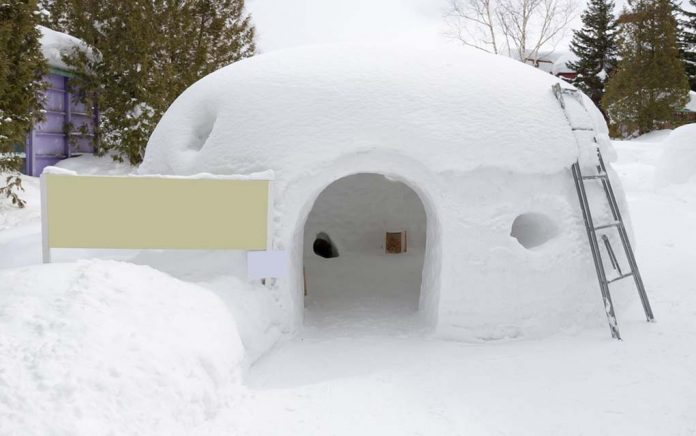
A disaster situation could strike you anywhere and at any time. That’s why it’s important to have the knowledge necessary when SHTF. Shelter is one of the most important aspects of survival, and knowing how to build one could save your life. Some shelters, however, serve better than others.
Hot Weather
Hot climates don’t require the same type of shelter you would need in a colder climate. Often, in warmer situations, the main purpose of your shelter is to provide shade from the sun. Ramadas don’t provide much protection against rain, but they’re simple to make. You only need four posts, some lightweight beams and something like a tarp, mat or brush to make a flat roof. A ramada provides you with an excellent way to stay in the shade, and you can add removable walls to it to block the wind during the cooler hours of the night.
The Cold
A shelter in colder climates needs to offer you a way to stay warm, dry and out of the wind. For this, we have an igloo-like shelter called a quinzhee. Pile up some gear under a tarp, pile snow on top of the tarp and pack it down. Continue until the snow is about two feet deep. All around the perimeter, for size reference, push three or four dozen sticks into the snow about a foot deep. Make a way to get into the quinzhee and retrieve your gear, and then start digging the snow out until you reach the base of each stick. Finally, make a fist sized vent hole in the roof of the structure.
Rainy Weather
Nobody likes getting rained on while they’re trying to sleep. Clothes can take time to dry out, and you can get cold much easier when you’re wet. For these situations, you can build a wedge tarp shelter. This shelter offers great wind and rain protection with its aerodynamic shape.
To make one, start by staking down two adjacent corners. On the opposite side, tie a line to the center of the tarp elevated off the ground to a branch or tree. Take the two remaining corners and tie them to the ground and away from the center. Place some rocks beneath the lower end to form basins in the tarp; this allows your shelter to catch rainwater while it protects you.
Shelters provide us with protection from not just the elements, but from wildlife as well. Remember, when you’re in the wilderness without a weapon, you’re no longer on top of the food chain. Be sure to check out how to survive a wolf attack. Hopefully, you never have to implement it, but it’s a good skill to know.
Copyright 2021, TheSurvivalGuide.com














